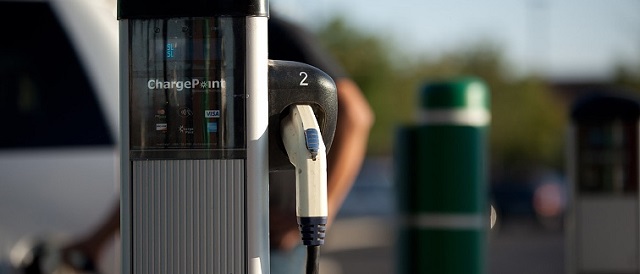International
U.S. birth rate hit record low last year, signaling surge in childlessness

From LifeSiteNews
As data analyst Stephen Shaw has documented in his film ‘Birthgap,’ declining birth rates in the U.S. and around the world are being driven by an ‘explosion’ in women choosing not to have children.
The U.S. birth rate hit a record low last year of 1.62 births per woman according to data from the Centers for Disease Control and Prevention (CDC), part of a worldwide trend of declining birth rates that have been shown to stem from rising childlessness.
The U.S. has had birth rates mostly below replacement level since 1972, according to United Nations (UN) data, with a minor brief respite from 2006 to 2007, when birth rates were just at replacement level. Birth rates hovered near replacement level from about 1989 to its recent peak of 2.11 births per woman in 2007. Since then, the birth rate has steadily declined.

The new CDC data shows that the birth rate for women ages 20 to 24 has seen a particularly steep decline of 47% since 2007. From 2022 to 2023 alone, the number of births for this age group dropped 4%.
As data analyst Stephen Shaw has documented in his film “Birthgap,” declining birth rates not just in the U.S. but around the world are being driven not by smaller family sizes but by an “explosion” in childlessness.
By comparing statistics on first-time mothers and the number of children they go on to have with national fertility rates, Shaw found that childlessness rates skyrocketed within only a few years in many countries.
For example, in Japan in 1974, one in 20 women were childless. By 1977, this ratio was one in four, and by 1990, it had reached one in three, a statistic that held in 2020. While Shaw doesn’t give specific numbers for most countries, he shares that most have become, like Italy and Japan, “childless nations,” where one-third or more people will become “childless for life.”
And according to the Pew Research Center, by 2010, “Nearly one-in-five American women end(ed) her childbearing years without having borne a child, compared with one-in-10 in the 1970s.” As of 2018, 41% of women between the ages of 25 and 44 were single and childless, and that number is projected to spike to a whopping 45% by 2030.
Just as remarkable as this trend is the finding in a Dutch meta-analysis, cited by author Jody Day in Shaw’s “Birthgap” film, and using data from the early 2000s, that only 10 percent of such women are childless “by choice,” and another 10 percent are childless due to “known” medical reasons, including infertility.
Institute for Family Studies (IFS) confirmed in December 2022 that the majority of childless women actually desire children. Thus, as Shaw summed up in his film, the main driver of childless women around the world now is failing to “find the right partner at the right time.”
Shaw highlighted what appear to be contributing factors: childbearing is delayed until a woman’s fertility window closes; women tend to want to settle with men at least as educated as they are, and everywhere, significantly more women are attending college than men; there are “too many options;” a number of young men are staying at home playing video games instead of pursuing women (or have given up on that).
Many speculate that increased pornography use and addiction is disincentivizing young men’s pursuit of women, and that overuse of technology is leading many young men and women to live isolated from each other.
The increasing secularization of society may also lead to growing numbers of childless women (and men) through a whole slew of hard-to-quantify factors, including by diminishing young people’s sense of purpose and happiness, and depriving them of character formation and a meaningful, effective way to select a mate.
Commentators such as Elon Musk have warned that if global birth rates continue to decline at their current projected rates, “human civilization will end.”
Automotive
Biden’s Climate Agenda Is Running Headfirst Into A Wall Of His Own Making

 From the Daily Caller News Foundation
From the Daily Caller News Foundation
By WILL KESSLER
President Joe Biden’s administration unveiled tariffs this week aimed at boosting domestic production of green energy technology, but the move could end up hamstringing his larger climate goals.
The tariffs announced on Tuesday quadruple levies for Chinese electric vehicles (EVs) to 100% and raise rates for certain Chinese green energy and EV components like minerals and batteries. Biden has made the transition to green energy and EVs a key part of his climate agenda, but hiking tariffs on those products to help U.S. manufacturing could jack up prices on the already costly products, slowing adoption by struggling Americans, according to experts who spoke to the DCNF.
The risks posed by hiking levies on green technology expose the inherent tension between Biden’s climate agenda and his efforts to protect American industry, which often struggles to compete with cheap foreign labor. Items on his climate agenda typically raise costs, and requiring companies to comply could make them uncompetitive on the world stage.
“These tariffs are a classic example of the Biden administration’s left hand not knowing what the right hand is doing,” E.J. Antoni, a research fellow at the Heritage Foundation’s Grover M. Hermann Center for the Federal Budget, told the DCNF. “The inability to import Chinese-made EVs due to prohibitively high costs will necessitate importing raw materials and parts for EVs from China. Since automakers can’t afford to build and assemble the vehicles here, prices will have to rise. In other words, American consumers will pay the cost of this tariff, not the Chinese.”
The White House, in its fact sheet, pointed to China artificially lowering its prices and dumping goods on the global market as the justification for the new tariffs in an effort to help protect American businesses. China has pumped huge subsidies into its own EV industry and supply lines over the past few years, spawning a European Union investigation into vehicles from the country.
“Tariffs on Chinese EVs won’t just make Chinese EVs more expensive, they will also make American EVs more expensive,” Ryan Young, senior economist at the Competitive Enterprise Institute, told the DCNF. “This is because domestic producers can now raise their prices without fear of being undercut by competitors. Good for them but bad for consumers — and for the Biden administration’s policy goal of increased EV adoption.”
Several American manufacturers are already struggling to sell EVs at a profit, with Ford losing $4.7 billion on its electric line in 2023 while selling over 72,000 of the vehicles. To ease price concerns and increase EV adoption, the Biden administration created an EV tax credit of $7,500 per vehicle, depending on where its parts are made.
The market share of EVs out of all vehicles fell in the first quarter of 2024 from 7.6% to 7.1% as consumers opted to buy cheaper traditional vehicles instead. Growth in EV sales increased by just 2.7% in the quarter, far slower than the 47% growth that the industry saw in all of 2023.
The Biden administration has also sought to use regulations to push automakers toward electrifying their offerings as consumers refuse to voluntarily adopt EVs, finalizing rules in March that effectively require around 67% of all light-duty vehicles sold after 2032 to be electric or hybrids.
“By raising the price — and thereby stunting the deployment — of EVs, the tariffs undermine the Biden administration’s stated goals of reducing carbon emissions (as many U.S. environmentalists and EV fans have recently lamented),” Clark Packard, research fellow in the Herbert A. Stiefel Center for Trade Policy Studies at the Cato Institute, wrote following the announcement. “The EV tariffs (and also-announced solar tariffs) would continue the administration’s habit of choosing politics and protectionism over their environmental agenda.”
Despite the subsidies, the 25% tariff that is currently in place for Chinese EVs already prices the product out of the U.S. market, resulting in no Chinese-branded EVs being sold in the country, according to Barron’s. Only a handful of the more than 100 EV models being sold in China appeal to American consumers, and none of them can compete under current levies.
“Something like this happened just a few years ago when former president Donald Trump enacted 25% steel tariffs in 2018,” Young told the DCNF. “Domestic steel producers raised their prices by almost exactly the amount of the tariff, and America soon had the world’s highest steel prices. As a result, car prices went up by about $200 to $300 on average. Larger trucks with more steel content increased even more. Now Biden is going to do the same thing to EVs.”
I won’t allow American towns and workers to be hurt by China’s unfair trade practices that flood our markets with cheap products.
That’s what these new tariffs are all about. pic.twitter.com/GGApGqtg7O
— President Biden (@POTUS) May 15, 2024
In the year following the increase in steel tariffs under the Trump administration, U.S. Steel’s operating profit rose 38%, prices were hiked 5 to 10% and revenue was up 15% due to reduced competition, according to CNN.
Despite the massive tariff hike on EVs, Biden only raised the tariff rate on Chinese lithium-ion EV batteries and battery parts to 25%, according to the White House. The tariff rate on certain essential minerals, like natural graphite, was also hiked to just 25%.
“Despite rapid and recent progress in U.S. onshoring, China currently controls over 80% of certain segments of the EV battery supply chain, particularly upstream nodes such as critical minerals mining, processing, and refining,” the White House wrote in its fact sheet. “Concentration of critical minerals mining and refining capacity in China leaves our supply chains vulnerable and our national security and clean energy goals at risk.”
China has broad control over the majority of minerals necessary to construct EVs, possessing nearly 90% of the world’s mineral refining capacity. Sources of the required minerals often also have serious human rights concerns, such as the world’s supply of cobalt, which has widespread ties to child labor.
Biden attacked former President Donald Trump during the 2020 election for the broad tariffs that he put on Chinese goods, noting that “any freshman econ student” could point out that the costs of the tariffs would be passed on to American consumers.
EV makers have increasingly struggled over the past year to maintain profits amid stalling demand, with the largest American EV manufacturer, Tesla, reporting a 10% drop in year-over-year revenue in the first quarter of 2024. Tesla is one of several EV makers that have announced layoffs in recent months.
“Fortunately, the EV market is still small in the U.S. and Chinese EVs are an even smaller slice of that small pie,” Antoni told the DCNF. “Even if the EV market in the U.S. were large, these tariffs would not help the domestic EV industry. While consumer demand for EVs would shift to domestic models, an increase in domestic production would rely on very expensive inputs from China, cutting into profits.”
The White House did not respond to a request to comment from the DCNF.
illegal immigration
Suspected Terrorists Illegally Entering US Up Over 2,500% Under Biden From Trump Era

 From the Daily Caller News Foundation
From the Daily Caller News Foundation
The number of suspected terrorists entering illegally into the U.S. has spiked over 2,500% since the previous administration, according to the latest federal data.
Border Patrol agents apprehended a total of 367 individuals at the southern and northern borders between fiscal years 2021 and 2024 whose names appeared on the terror watch list, according to the latest data released by Customs and Border Protection (CBP). The number marks a roughly 2,521% increase from the 14 suspected terrorists caught between ports of entry in fiscal years 2017 to 2020.
There were 80 Border Patrol encounters of suspected terrorists at the U.S.-Mexico border in the first seven months of the current fiscal year, while there were only 11 caught by agents during President Donald Trump’s White House tenure from fiscal years 2017 to 2020, the data shows.
The latest numbers follow several high-profile encounters with suspected terrorists at the border, with some being allowed to roam free into the country.
Mohammad Kharwin, an Afghan national, was placed into a government monitoring program after illegally crossing the U.S.-Mexico border near San Ysidro, California, in 2023. He was almost immediately taken off the program, known as Alternatives to Detention, and was able to roam free in the country for nearly a year until it was discovered that he had potential ties to Hezbo-e-Islmi, a U.S.-designated terrorist organization.
A Pakistani national illegally crossed the southern border in November 2023 and was a confirmed match for a name on the terror watch list. The terror suspect was also placed into the Alternatives to Detention program for a day before being put back into physical detention.
The latest immigration data also reveals the record number of Chinese nationals entering the U.S., which Republican lawmakers argue present another security risk for the country.
A total of 27,583 Chinese nationals unlawfully crossed into the U.S. over the past seven months of fiscal year 2024 — surpassing the 24,125 who illegally crossed in fiscal year 2023 and exceeding the 1,987 who illegally entered in fiscal year 2022, the CBP numbers show.
-

 Automotive2 days ago
Automotive2 days agoGovernments in Canada accelerate EV ‘investments’ as automakers reverse course
-

 conflict1 day ago
conflict1 day agoWhite House Reportedly Worried About Russia’s Sudden Momentum Months After Biden Declared Putin ‘Already Lost’ War
-

 Health2 days ago
Health2 days agoSouth Korean president declares low birth rate a ‘national emergency,’ plans new ministry to address it
-

 Alberta2 days ago
Alberta2 days agoFortis et Liber: Alberta’s Future in the Canadian Federation
-

 Crime1 day ago
Crime1 day agoSlovakian prime minister who opposed WHO Pandemic Treaty shot in assassination attempt
-

 COVID-1922 hours ago
COVID-1922 hours agoNIH Quietly Altered Definition For Gain-Of-Function Research On Its Website, Former Fauci Aide Confirms
-

 Crime19 hours ago
Crime19 hours agoThe US Canadian border: Greatest number of terrorist watch list individuals being apprehended at northern border
-

 Health2 days ago
Health2 days agoUK pediatrician who led review of child ‘transitions’ says US medical groups ‘misleading the public’






